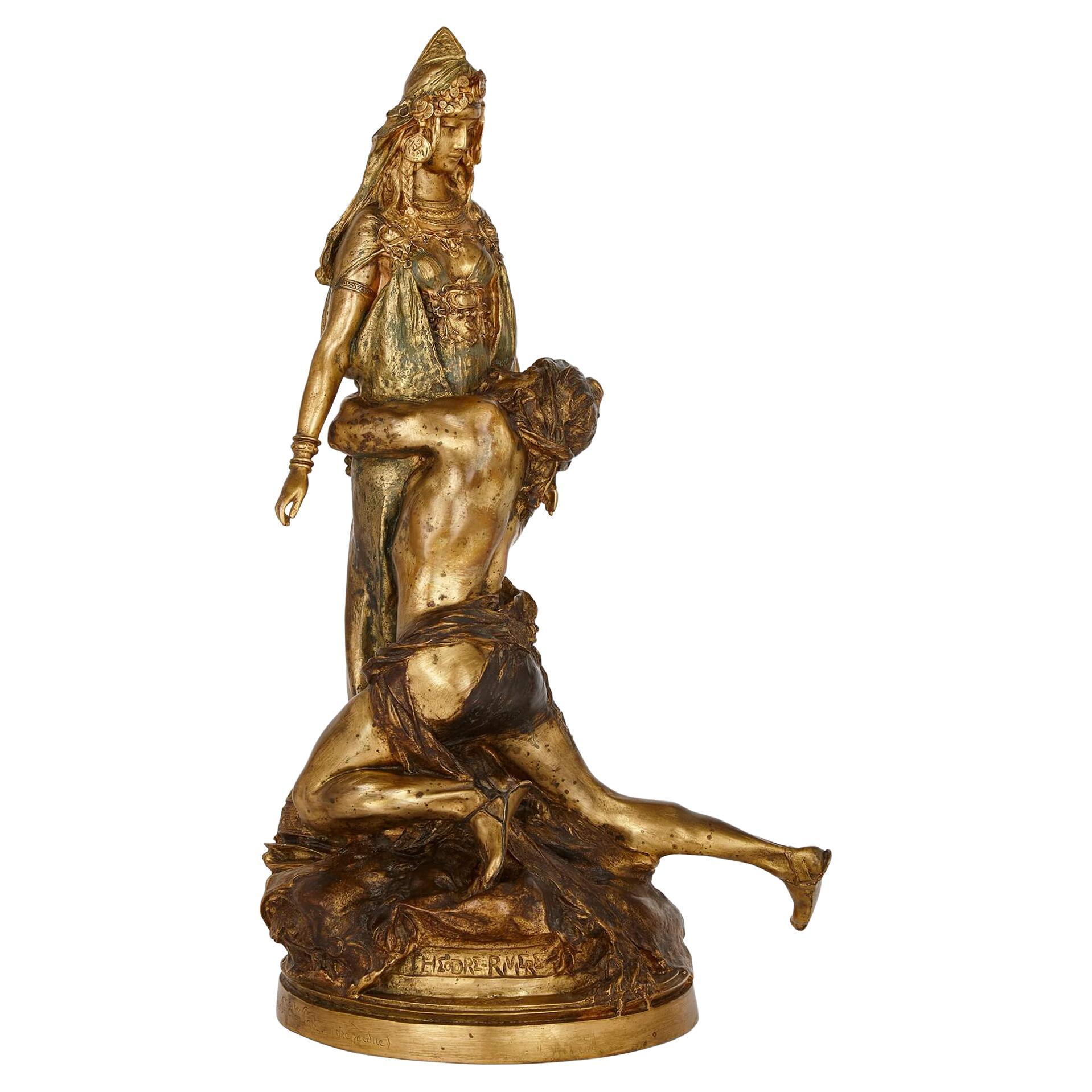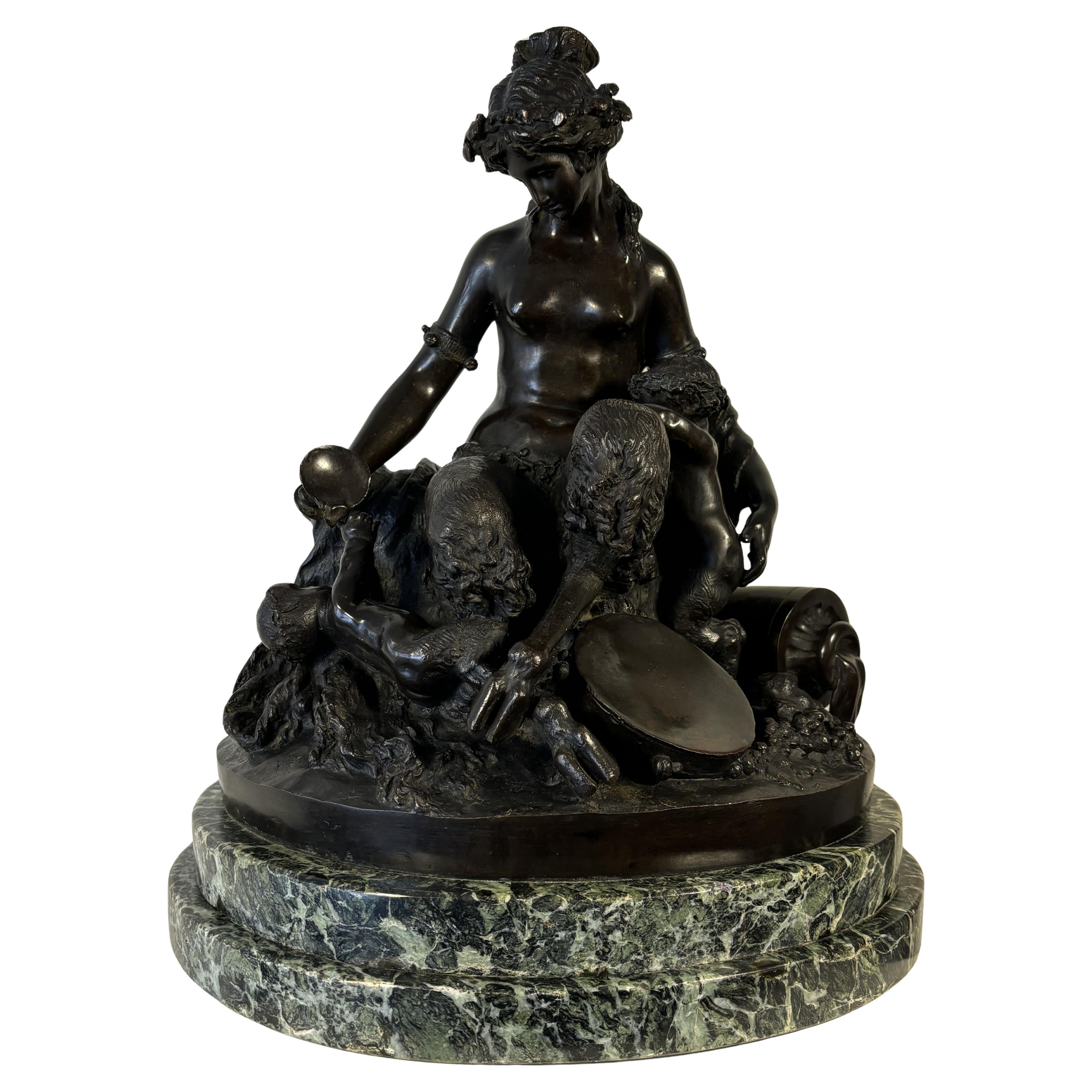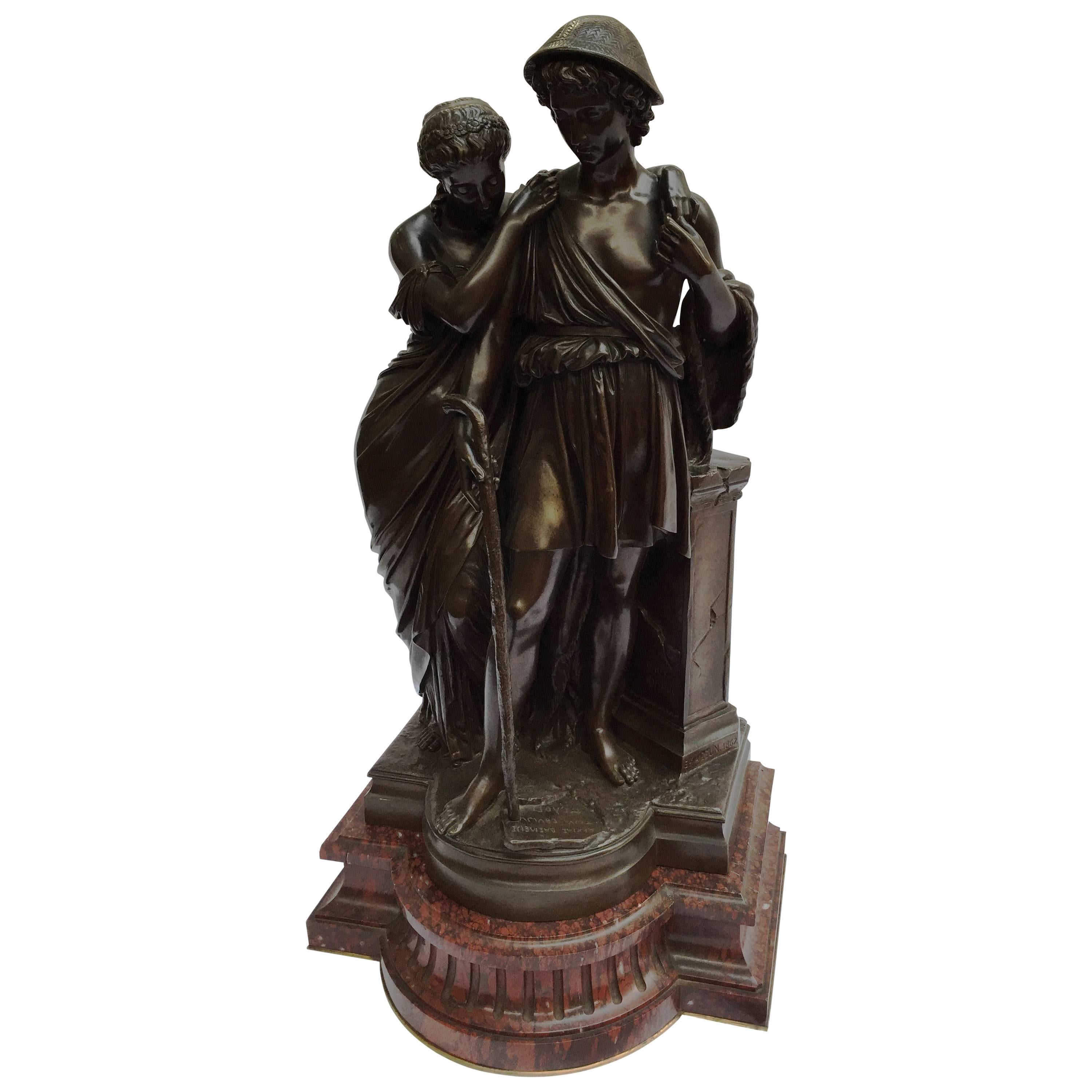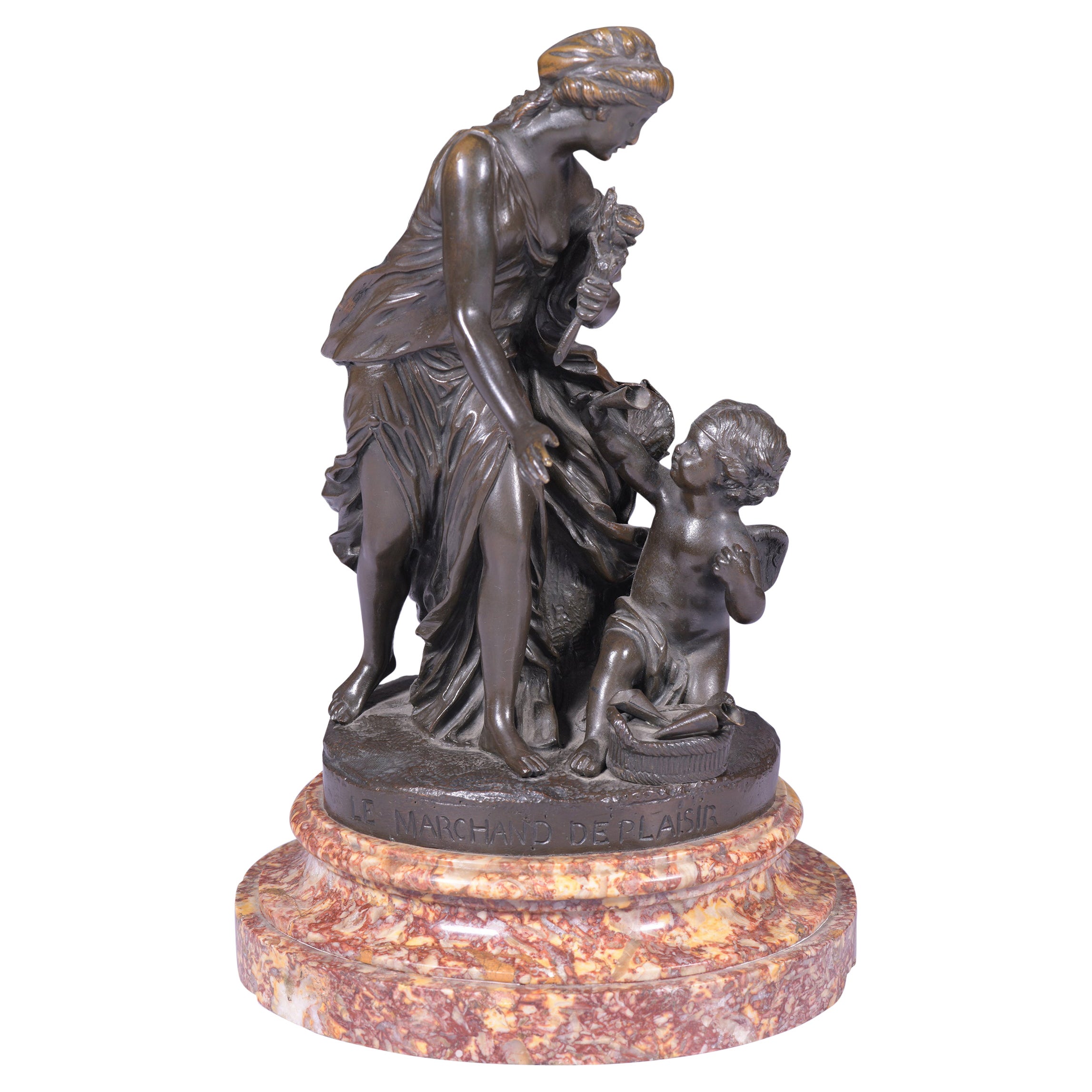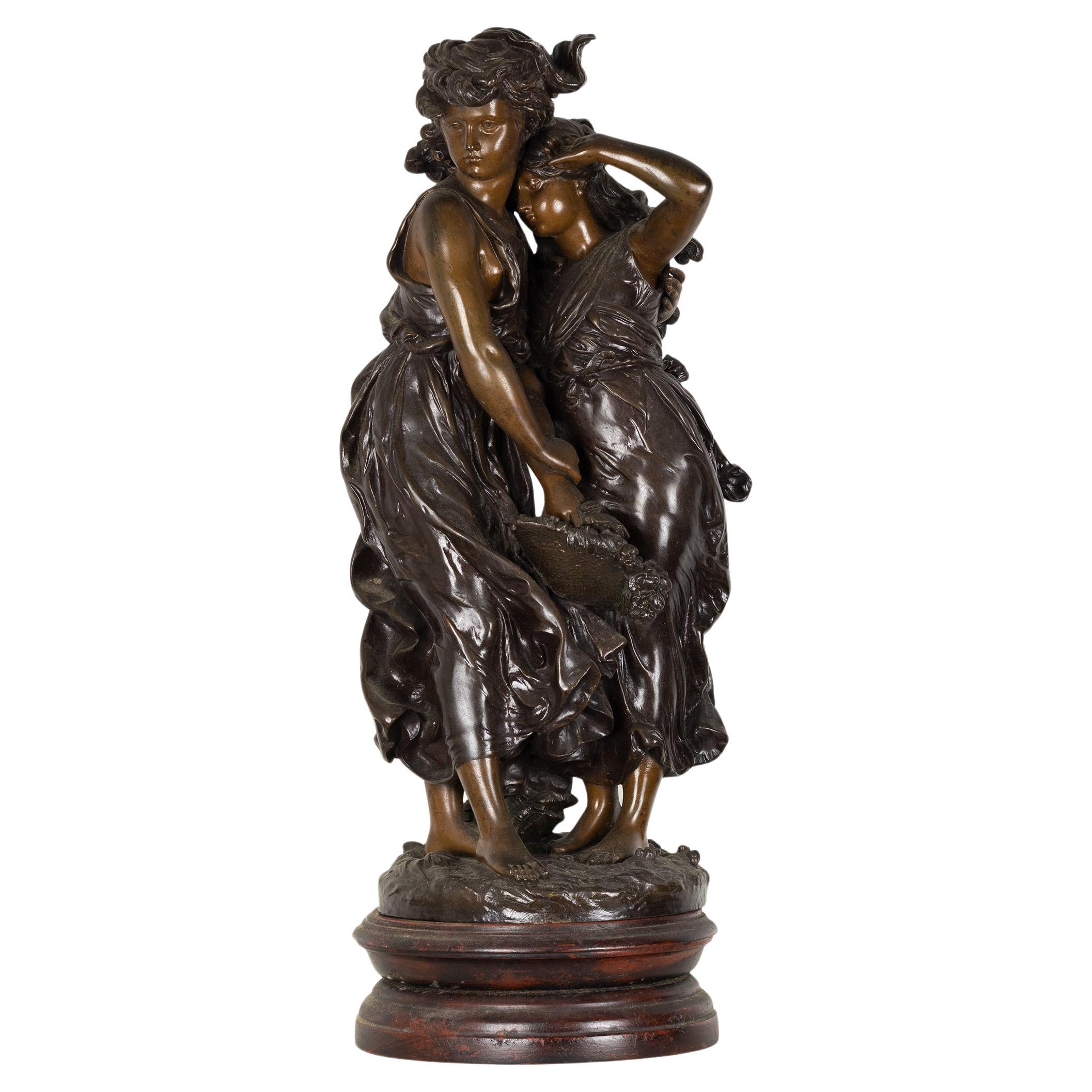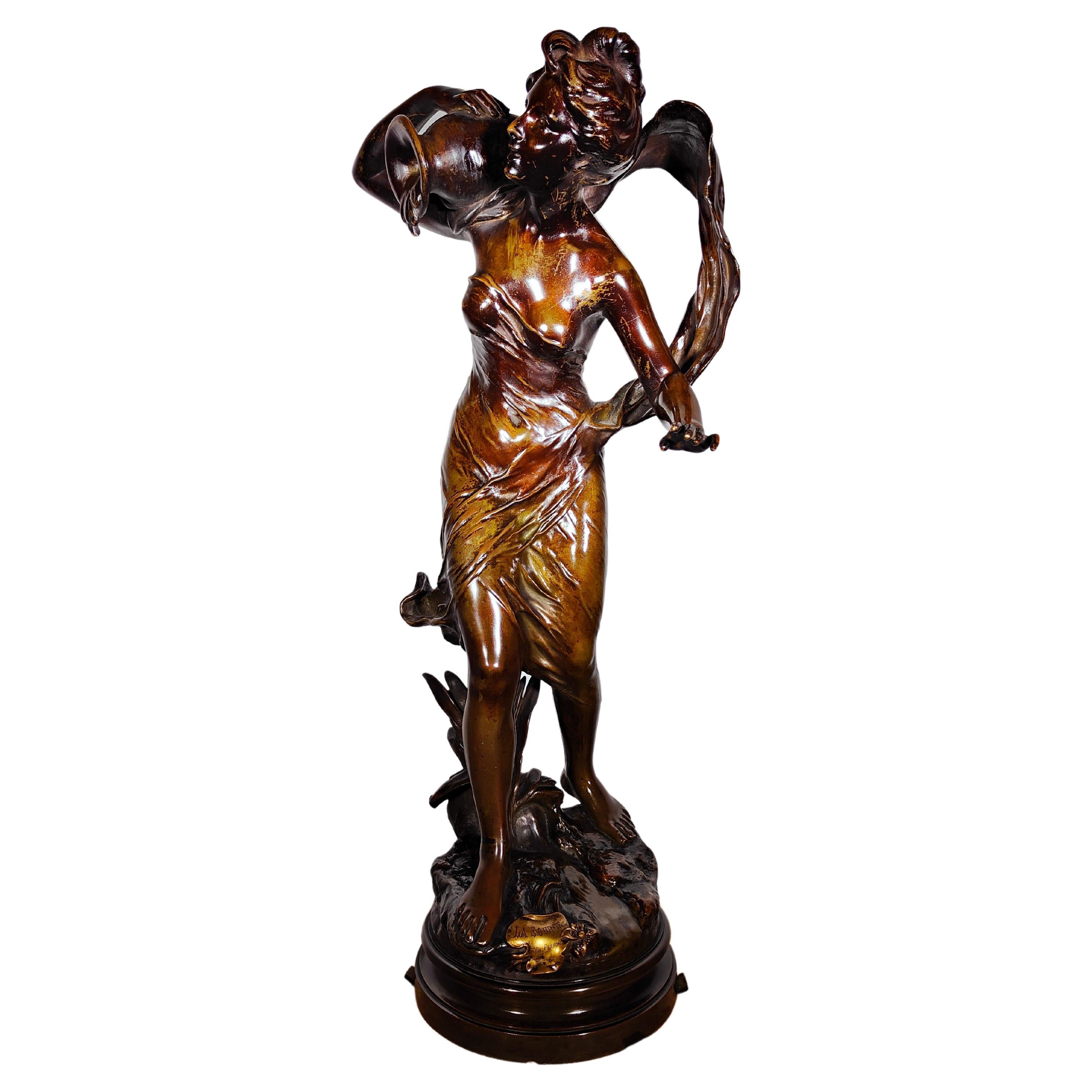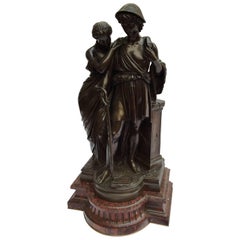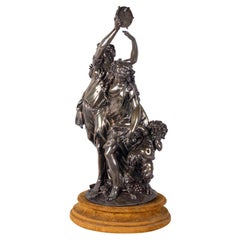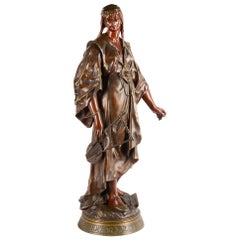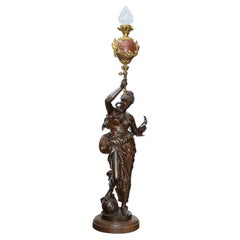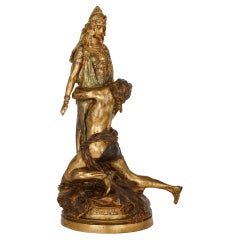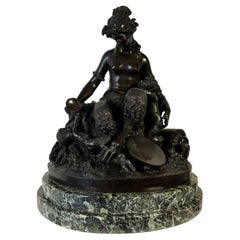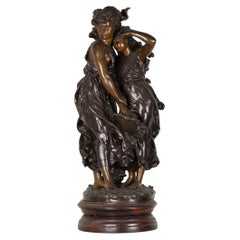Items Similar to Carthage, A Patinated Bronze Group by Theodore Riviere
Want more images or videos?
Request additional images or videos from the seller
1 of 10
Carthage, A Patinated Bronze Group by Theodore Riviere
$11,718.20
£8,500
€9,925.84
CA$16,202.49
A$17,788.31
CHF 9,280.20
MX$215,263.37
NOK 116,312.92
SEK 109,597.35
DKK 74,093.74
About the Item
‘Carthage’ – A Fine Patinated Bronze Group of Salammbô at Mathô's, By Theodore Riviere,
Signed ‘THEODORE-RIVIERE’ and titled "Carthage".
The subject of this work was taken from Gustave Flaubert's novel, Salammbô, published in 1862. The figure of Salammbô, the legendary femme fatale was to inspire many Symbolist artists.
The story takes place between 241–238 BC, during the war between Carthage and its rebels. Mâthô, the chief of the barbarian soldiers, fell in love with Salammbô, the daughter of the Carthaginian General Hamilcar Barca. Rivière has chosen the moment when, mortally wounded by the people, Mâthô dies at the feet of Salammbô his idol crying: "I love you! I love you!"
This model was exhibited at the Salon des Artistes Français in 1895 and at the Paris 1900 Universal Exhibition, where it was considered as one of the Symbolist movement's key exhibits. A Chryselephantine group is in the Musée d'Orsay, Paris, and a plaster-model in the collection of the Musée des Beaux Arts, Dijon.
French, Circa 1910.
- Creator:Théodore Rivière (Sculptor)
- Dimensions:Height: 19.3 in (49 cm)Width: 8.67 in (22 cm)Depth: 9.45 in (24 cm)
- Materials and Techniques:Bronze,Patinated
- Period:
- Date of Manufacture:1900
- Condition:Wear consistent with age and use.
- Seller Location:Brighton, GB
- Reference Number:Seller: Batch 64 61025 TNZTZ1stDibs: LU1227228195612
About the Seller
5.0
Gold Seller
Premium sellers maintaining a 4.3+ rating and 24-hour response times
1stDibs seller since 2015
497 sales on 1stDibs
Typical response time: 1 hour
Associations
LAPADA - The Association of Arts & Antiques Dealers
- ShippingRetrieving quote...Shipping from: Brighton, United Kingdom
- Return Policy
Authenticity Guarantee
In the unlikely event there’s an issue with an item’s authenticity, contact us within 1 year for a full refund. DetailsMoney-Back Guarantee
If your item is not as described, is damaged in transit, or does not arrive, contact us within 7 days for a full refund. Details24-Hour Cancellation
You have a 24-hour grace period in which to reconsider your purchase, with no questions asked.Vetted Professional Sellers
Our world-class sellers must adhere to strict standards for service and quality, maintaining the integrity of our listings.Price-Match Guarantee
If you find that a seller listed the same item for a lower price elsewhere, we’ll match it.Trusted Global Delivery
Our best-in-class carrier network provides specialized shipping options worldwide, including custom delivery.More From This Seller
View AllShepherds of Arcadia, Barbedienne Bronze, 19th Century
By Eugene-Antoine Aizelin, F. Barbedienne Foundry
Located in Brighton, Sussex
Barbedienne bronze of the Shepherds of Arcadia by Eugene Antoine Aizelin (French 1821-1902) Bergers d'Arcadie. Patinated bronze mounted on a rouge m...
Category
Antique 19th Century French Figurative Sculptures
Materials
Bronze
19th Century Bronze Bacchus Influenced Clodion Group
By Claude Michel Clodion
Located in Brighton, Sussex
A very good quality 19th century patinated silvered bronze Bacchus influenced group.
Signed; Clodion.
Category
Antique 19th Century French Classical Greek Figurative Sculptures
Materials
Bronze
Émile-Louis Picault, a French Orientalist Bronze of Queen Esther
By Émile Louis Picault
Located in Brighton, Sussex
Emile-Louis Picault, a large French orientalist patinated bronze figure of Queen Esther, circa 1870.
A beautiful quality and rare subject bronze figure...
Category
Antique 19th Century French Romantic Figurative Sculptures
Materials
Bronze
Imposing 19th Century Bronze Torchere, by Coutan
Located in Brighton, Sussex
This very fine patinated bronze figural torchere modeled as a classically clad female musician holding a mandolin and a marble torch. This symbolic representation of Music, falls within Coutan’s allegorical work.
We have a number of marble pedestals this Torchere would stand on.
Inscribed on base: Coutan, Thiébaut Frères, Fondeurs.
Jules-Félix Coutan (22 September 1848 – 23 February 1939) is considered to be one of the most gifted French sculptors and designers of the 19th and early 20th centuries
Coutan studied under the renowned Pierre-Jules Cavelier at the Ecole des Beaux-Arts in Paris, and was awarded the Prix de Rome in 1872; after his return to Paris he executed the fountain group France Bearing the Torch of Civilization for the Exposition Universelle (1889), one of the two prominent sculptural commissions for the Exposition grounds.[1] Later he taught at the École des Beaux-Arts from 1900, where he expressed his disdain for the researches of Rodin— fumiste—[2] and the Impressionist sculptors who followed him. Coutan was elected to the Académie des Beaux-Arts in 1905.[3]
Coutan is best known in the United States for the sculptural group above the entrance to Grand Central Terminal in New York City. For Grand Central Terminal, Coutan was contracted to provide a quarter-size scale plaster model of the three-figure allegorical Transportation group, which he developed from 1911 through 1914. The carving was performed by the William Bradley & Son of Long Island City.[4]
Among Coutan's students were Hippolyte Lefèbvre, Raymond...
Category
Antique 19th Century French Neoclassical Figurative Sculptures
Materials
Bronze
19th Century Classical Bronze Clock / Sculpture, by Aug. Moreau
By Auguste Moreau
Located in Brighton, Sussex
Bronze sculpture with brown patina including a clock and signed Auguste Moreau. It features a woman wearing a flowing dress who is standing on a globe. The title printed on a small p...
Category
Antique 19th Century French Classical Greek Table Clocks and Desk Clocks
Materials
Bronze
Classical Bronze maiden by Houdebine, Paris. 19th Century
By Henri Houdebine
Located in Brighton, Sussex
A very good quality late 19th Century Bronze statue of a semi clad maiden with her arms out stretched, standing in front of the Moons crescent.
Signed; Henri Houdebine. Henri Houdebi...
Category
Antique Late 19th Century French Abstract Sculptures
Materials
Bronze
You May Also Like
Lost-Wax Bronze Sculpture by Théodore Rivière, Titled 'Carthage'
By Théodore Rivière
Located in London, GB
A lost-wax bronze sculpture by Théodore Rivière, titled 'Carthage'
French, Late 19th Century
Height 41cm, width 23cm, depth 18cm
This superb lost...
Category
Antique Late 19th Century French Neoclassical Figurative Sculptures
Materials
Bronze
Large bronze group after Clodion dating from the 19th century
Located in RUEIL-MALMAISON, FR
Large bronze group with brown patina signed Clodion on the base of the group, dating from the 19th century, representing a fauna with her two children, one on her knees the other lyi...
Category
Antique 19th Century French Neoclassical Figurative Sculptures
Materials
Marble, Bronze
19th Century French Classical Bronze Group Signed Pigal "Le Merchand De Plaisir"
Located in Dublin, IE
A superb bronze model of a classical maiden and a putto entitled 'Le Merchand de Plaisir' the winged putto holding a posey vase, the maiden with a rose, on ...
Category
Antique 19th Century French Neoclassical Figurative Sculptures
Materials
Marble, Bronze
Protection Bronze Sculpture by Francois Moreau, 19th Century
By Hippolyte François Moreau
Located in Lisbon, PT
A bronze statue, two girls with the loose tunic in the wind hugging each other - Persephone the Goddess of Protection embraces the smallest girl in an act of protection.
Possesses a...
Category
Antique 19th Century French Neoclassical Figurative Sculptures
Materials
Bronze
$7,111 Sale Price
33% Off
Large Bronze by, Charles Théodore Perron
Located in Madrid, ES
Large bronze by: Charles Théodore Perron (French 1862-1934)
Elegant 19th century bronze signed CH Perron. It has a base that allows the sculpture to rotate ...
Category
Antique 1890s Figurative Sculptures
Materials
Bronze
Le Garde Du Harem, A Monumental Orientalist Bronze Sculpture by G. Coudray C. 18
By Georges Charles Coudray
Located in Long Island City, NY
Le Garde Du Harem, "The Harem Guard" A Monumental Orientalist Patinated Bronze Sculpture by Georges Charles Coudray (French, 1862-1932)
Le Garde Du Harem, "The Harem Guard Carryin...
Category
Antique 19th Century French Sculptures and Carvings
Materials
Bronze
More Ways To Browse
Antique Idols
Carthage Antique
Riviere Bronze
Fertility Goddess
Giltwood Cherub
Goebel Germany
Le Travail
Antique Plaster Statues
Chiparus Bronze
Mid Century Mannequins
Nude Dancer Sculpture
Pear Sculpture
Soldier Sculptures
15th Century Spanish
African And Sculpture And Man
Antique Breastplate
Antique Memento Mori
Carved Wood Life
